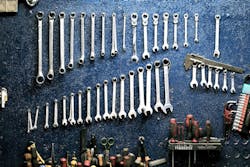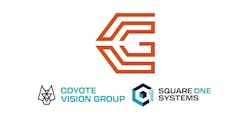One of the best things about being an owner who has gone through expansion are the lessons learned along the way. You build that first shop up, it’s rocking and rolling, and you think, “Maybe I should add another location.” I look back now and see how, well, naive I was, but I also appreciate everything I learned along the way. I think it made this last expansion all the sweeter because I appreciate just how well it went. It felt like I had finally cracked the code, finally figured out the right timing and how to do all of this smoothly. When we added this location, we were at capacity at all of our other locations. And not just what I thought was capacity; I could prove it. We were really, truly maxed out. That’s both workwise, DRP-wise, staff wise. We were over capacity, actually, and breaking every record. The timing was right with our DRP relationships and, once I showed how it would actually benefit everyone, with our staff, too. But what it most benefited, of course, is our customers.
So, what next? We actually took this expansion to think long term and consider the ways the industry is evolving and how our business should, too. It’s exciting and I think the best thing you can do as a shop owner is not to ignore the changes, or complain about them, but instead to be proactive and consider how you can take advantage of these changes and profit.
Part of that is our next step: a call center. My idea started as what you imagine a normal company with a call center and people at desks talking on the phone. But traveling around and seeing those types of operations, I realized it doesn’t have to be very elaborate. It’s a very controlled environment in which calls, especially new calls, can go. I even found out that our existing phone system can be routed every which way, so we don’t have to run phones or a new phone numbers. The beauty of it is a call center allows the CSRs to focus on the customers at the front desk. They’re not answering the phone asking if you can work on the car when a customer is coming in.
What it boils down to is that we’re talking about just a front office into which customers never walk. We’re going to do some photo estimates through it, filter all phone calls through it. We’ll be able to tell if someone is on the phone, someone is on vacation. The ball will get dropped much less. Really, “Let me call you back” will never, ever happen again. It’s an additional layer of security. The way we plan to staff it is likely one estimator and a couple CSRs to start out with that will field all of our calls.
There’s also a bigger picture of being an MSO, which is, where’s the best location for that car to go? Which shop is overbooked and which one is underbooked? The other big picture part of the call center, we want all shops booked out one week. That’s our rule of rule of thumb. The reason why is that we run into where one shop is booked out much longer. Customers don’t care where the car is fixed, once they’ve chosen you. Sure, some of them may want to drop it off at the most convenient spot, but a lot of times, if we tell them that it will take two weeks at that location but only two days at another location slightly farther away, it’s a no brainer.
I have a 15-year-old son and there’s no way he’s driving around for three estimates when he’s 18 years old. Photo estimates and all of that will happen so rapidly now. Insurance companies are already doing it, so we can whine and complain about it, but it’s the future. They don’t want to come in. That’s really where the call center will help immensely, too. We can identify jobs we don’t work on without having an estimator tied up. We can tell if it’s a total loss without it coming in. We can triage our work a little better. That’s the first building block.
Our goal is to have the customer (or the tow truck) bring it to the right location, of course, but we do move cars and that depends on certifications and equipment. One shop has a crazy strong frame rack. If it’s a great big truck, that's the one that one’s going to. We’re very fortunate that our shops are less than five miles apart. If I hit three street lights on the way, I’m kind of fired up. So, for the most part, if I push the customer to a location for the right reason, they’ll go that extra mile—literally—90 percent of the time.




